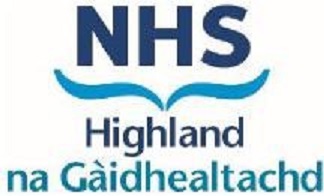ARMED FORCES AND VETERANS (Resources) | Right Decisions (scot.nhs.uk)
Prazosin for PTSD-related nightmares (Guidelines)

Warning
Indication
- Distress/functional impairment in patients with post-traumatic stress disorder (PTSD)-related nightmares.
- May be used as monotherapy for PTSD nightmares, or as an adjuvant to other medications used for global PTSD symptoms as a specific addition to reduce nightmares.
- There is no evidence that prazosin is effective as monotherapy for global PTSD symptoms and there is conflicting evidence for its efficacy on overall sleep quality.
Off-label prescribing
- Patients should be made aware that this is not a licensed indication for prazosin.
Cautions
- May add to the antihypertensive affect of other medications e.g. phosphodiesterase type 5 inhibitors and other antihypertensives (eg, beta blockers, calcium channel blockers).
Contraindications
- Hypersensitivity to the active substance, prazosin, other quinazolines or to any of the excipients (listed in section 6.1 of the SPC).
For initiation by or on the advice of a hospital specialist only
- It is important that patients being considered for treatment with prazosin for PTSD nightmares are also assessed within the Community Mental Health Team to identify psychiatric co-morbidities and to consider referral for appropriate trauma-focused psychological therapies.
- NICE guidelines emphasise that all patients with PTSD should have access to trauma-focused psychological therapies, and that drug treatments for PTSD should not be used as a routine first-line treatment for adults (in general use or by specialist mental health professionals) in preference to a trauma-focused psychological therapy. (NICE NG116)
Prescribing agreement
- It may be worth considering a prescribing agreement in collaboration with the patient, which sets out treatment goals, plans for monitoring response and an agreement to stop the medication if it is not effective.
- A suggested form is available within the ICP | Nhsh Pds Education (nhshdbtservice.wixsite.com)
Suggested dose schedule
- Start doses at 1mg at night to prevent initial dose syncope (reported by 1% at doses 2mg and up).
- Titrate dose upwards to 2mg after a 2 to 3 days, and then upwards in steps of 1mg every 2 to 7 days depending on benefit and side-effects (dizziness 10%, headache 8%, drowsiness 8%, lack of energy 7%, weakness 7%, palpitations 5%, nausea 5%).
- US Veterans PTSD guidelines state the target dose as being 6mg to 10mg/day, but studies suggest that veterans may require higher doses than civilians.
- Patients with severe complex dissociative PTSD resulting from childhood abuse may also require higher doses.
- Response is described at doses from 1mg to 16mg+.
- Use the minimum effective dose.
Common adverse effects
- Dizziness 10%, headache 8%, drowsiness 8%, lack of energy 7%, weakness 7%, palpitations 5% and nausea 5%.
Effects on ability to drive and operate machinery
- Patients should be advised on how to avoid symptoms resulting from postural hypotension and what measures to take should they develop.
- Patients should be cautioned to avoid situations where injury could result should dizziness or weakness occur during the initiation of prazosin treatment
Duration of treatment
- The optimum duration of treatment is not established, so, in discussion with the individual patient it would be appropriate to try withdrawing this medication after a period of stability, particularly if psychological therapy has also been effective in reducing other PTSD symptoms.
Toxicity in overdose (Toxbase entry Aug 2020)
- Coma and severe hypotension have been reported in adults following ingestion of between 80mg to 200mg of prazosin. All patients made a full recovery within 36 to 48 hours with symptomatic and supportive care alone (Lenz et al, 1985: Rygnestad & Dale, 1983; McClean, 1976).
- Co-ingestion of other drugs with blood pressure lowering effects may potentiate the hypotensive effects of prazosin.
- Following therapeutic doses, peak activity occurs between 1 to 2 hours and the plasma half-life is 2 to 3 hours (Hypovase SPC, 2021).
- Treatment of Nightmares with Prazosin: A Systematic Review, Kung et al, Mayo Clinic Proc. 2012:87(9):890-900
- Early Discontinuation and Subotimal Dosing with Prazosin: A potential Missed opportunity for Veterans with Posttraumatic Stress Disorder, Alexander et al, J Clin Psychiatry 76:5, May 2015
- Department of Veterans Affairs, Department of Defence, Clinical Practice Guideline for the management of posttraumatic stress, version 4.0 2023
- Australian Centre for Posttraumatic Mental Health, Australian Guidelines for the Treatment of Acute Stress Disorder and Posttraumatic Stress Disorder, 2013
- https://www.sciencedirect.com/science/article/pii/S1389945719302205?via%3Dihub
- Toxbase: https://www.toxbase.org/poisons-index-a-z/p-products/prazosin/
